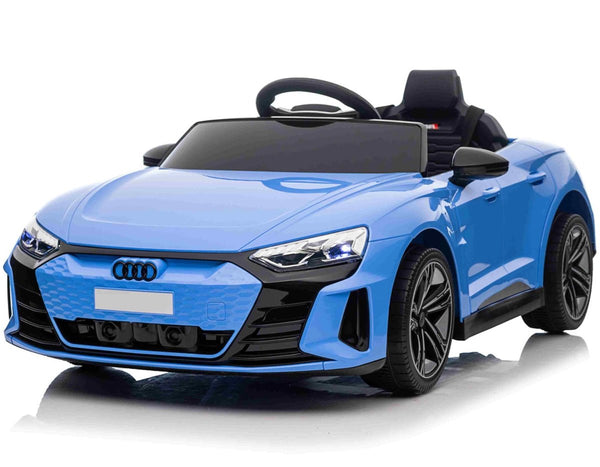Great Facts On Selecting Ride On Toys
Great Facts On Selecting Ride On Toys
Blog Article
What Do I Need Know About Battery Life And The Charging Time Of An Electric Ride On Children's Car?
Knowing the battery life and the life span of a kid's electric car is essential to ensure that your child has a fun and safe ride. What you need to understand the battery type
Children's electric cars are rechargeable and use lead-acid battery or lithium-ion battery. Lithium-ion battery have a longer life span and faster charging times than lead acid batteries.
Battery Capacity
The ride-on vehicle's operating time is determined by the battery's capacity. It is measured in amp-hours or Watt-hours. Higher capacity batteries provide longer playtime before needing to recharge.
Run Time -
This is the amount of time that an electric ride-on can run continuously after one charge. It can differ based on various factors like battery capacity, motor power, the terrain, and weight of the person riding.
The average run time for electric ride-on vehicles is between 30 minutes and two hours. However, some batteries with higher capacity could have longer run times.
Charging Time -
The charging time is how long it takes to fully recharge the battery once it has been depleted. Charge times can vary depending on the battery's capacity or specifications for the charger.
Charge times range between 8 and 12-hours for a full charge of electric ride-on cars. Certain models offer faster charging rates, particularly those using lithium ion batteries.
The battery's security and longevity can be assured by adhering to the manufacturer's charging instructions. Undercharging or overcharging the batteries can have detrimental effects on their performance and longevity.
Charge Method -
Electric ride-on vehicles typically have a charging station which plugs into a outlet for homes. Certain models provide quick charging, or have a clever charger that monitors and regulates the rate at which the battery is charged.
Make sure whether the charging ports on ride-on vehicles are compatible in order to prevent any damage to the battery or electrical components.
Additional Batteries
Certain electric vehicles allow the purchase of additional or spare batteries. This may extend duration of play. Extra batteries allow you to recharge batteries that are depleted with fully charged batteries, which can reduce downtime.
Understanding the battery life and charging times of an electric ride-on kids' car ensures your child will enjoy uninterrupted playtime and fun adventures while exploring their surroundings. Battery life can be maximized by regularly charging the battery and using proper charging techniques. Check out the top rated electric kids cars for more recommendations including two seater childrens electric cars, remote control childrens electric cars, car toy car toy, electric toy car, toy with car, electric car ride, electric toy car, two seater childrens electric cars, toy cars, childrens electric cars and more. . 
What Kind Of Assembly And Maintenance Requirements Are There For Kid's Ride-On Vehicles?
Kids' ride-on cars usually require some assembly and regular maintenance to ensure maximum performance, safety, and longevity. Below are the typical assembly and maintenance requirements of kid's rides-on-cars.
The majority of ride-on cars are assembled, and will require assembly. Attaching the wheels, steering wheel, seats and other accessories to the ride-on car as per the directions of the manufacturer is the most popular method.
Be sure to follow the assembly instructions carefully and ensure that every component is securely secured. Following the instructions, complete the assembly using the equipment and tools provided.
Cleaning
It is important to clean the vehicle's ride-on regularly in order to maintain its appearance and function. Use a soft, dampened cloth or sponge using mild soap and warm water to clean exterior surfaces.
Special attention should be paid to areas that are prone to accumulating, such as wheels, tires and undercarriage. Use a brush or a tooth brush to scrub areas that are difficult to reach, and also remove hard-to-remove dirt.
Avoid making use of harsh chemicals, abrasive cleaners, or high-pressure water sprays, because they can harm the electronic or paint components of the ride-on car.
Battery Care –
To maintain performance and to prolong the life of a ride-on battery, it is vital that you take proper care of your battery. Here are some guidelines on battery care.
Make sure to fully charge your battery prior to the first use and every time you utilize it to ensure the longest running time.
Avoid overcharging or leaving the battery connected to the charger for extended durations, since this could damage the battery and reduce its life span.
When not being used, store the ride-on vehicle and the battery in a cool, dry place away from direct sunlight.
Examine the battery terminals regularly for corrosion or damage. Clean them as needed with an electric wirebrush or terminal cleaner.
Replace the battery if it is no longer charging, or if there are indications of damage.
Tire Maintenance -
Be sure to check the tires on a regular basis for signs of wear, damage or loss of pressure. Inflate the tires to the recommended pressure with the bicycle pump or an air compressor if required.
The tread pattern needs to be examined for foreign objects, debris or other obstructions that can cause flats. Replace or repair damaged tires by removing any obstructions.
Lubricate the wheels, axles, bearings and other components to ensure smooth and efficient rotation.
Sometimes, repairs or replacements are needed.
Wear and tear, or accidental damage can cause parts of ride-on cars to need replacement or repair.
Keep an eye out for indicators that your system is malfunctioning or becoming damaged, including strange sound or behavior, power loss, or other signs of trouble. For troubleshooting or repair options, consult the manufacturer's instructions.
Replace worn or damaged components as soon possible to prevent any further damage and ensure the safety of your ride on the car.
You can be sure that your kid's rideon car is in perfect condition by adhering to these assembly and maintenance instructions. Your child can look forward to numerous hours of safe enjoyable and thrilling playing time. See the recommended read more about kids cars for blog recommendations including electric ride on cars, car on ride, ride ons, electric car ride, ride a toy, toy cars toy car, car for toy, electric toy car, kidscars, electric car ride and more. . 
How Can You Determine An Amount To Spend On A Ride-On Car For Your Child?
When making a decision on the budget for your home, be aware of factors such as the quality of the product, its durability, and your financial situation. It is possible to find the most effective cost and price by analyzing the average price.
You can start by researching the cost of children's ride-on vehicles that have the features you desire. Prices for different models can be obtained from online retailers, toys stores as well as manufacturers' websites.
Choose Must-Have Feature to Have -
The features you select will affect the cost of your ride-on vehicle. Features like functioning headlights, realistic sound and remote controls for parents, and seat belts can affect the cost of the ride-on vehicle.
Prioritize features according to your child's tastes and financial budget.
Consider Durability and Longevity -
Ride-on cars should be made from durable materials including plastics and metals. They should be also able to endure weather conditions.
To find out the durability and lifespan of different models, you can read reviews and ask other parents for suggestions. An upfront investment of more money in a high-quality ride-on vehicle can result in savings over the long term through avoiding repairs and replacements.
Compare prices at different retailers
Compare prices across different retailers and get the most competitive price. Visit online retailers as well as local department and toy stores for specials and competitive pricing.
Look for clearance, sales or sales that can make it easier to save money on your purchase, without compromising quality.
Add Costs to Additional Costs
Incorporate any other expenses you might incur when buying a car ride-on for your child. This includes shipping costs tax, and other accessories (e.g. extra batteries, safety equipment).
Budget your total costs of ownership, including maintenance and accessories to make sure you can afford them.
Budget realistically
A budget that is realistic should be set according to your priorities, needs, and the results of your research. Consider the durability of the features, as well as longevity when determining the maximum price you are willing to pay for your ride-on vehicle.
Be careful not to stretch your budget to the limit or spending money on unnecessary items that might not provide any value to your child's play experience.
Take into consideration value over the long term -
Consider the value of a ride-on car for your child in terms of durability, flexibility, and the ability to grow along with the child's development. The value of a car which is top-quality and has many features can be higher over time, compared to a less expensive and less durable alternative.
If you have a realistic budget and then carefully evaluate the quality, features, and long-term value of each car for your ride-on child and you'll find it's worth every penny. Prioritize features that matter most to your child's happiness and safety while staying within your budget constraints. Have a look at the best ride on toys kidscars.co.uk news for site recommendations including toy in car, toy ride, riding digger, car on ride, car for toy, riding digger, ride of car, ride on toy, riding digger, toy with car and more. .